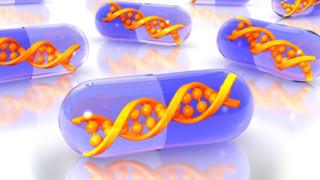Confounding
Gold Member
- Jan 31, 2016
- 7,073
- 1,551
- 280
- Banned
- #1
Here is a link to the research paper: http://www.nature.com/nbt/journal/vaop/ncurrent/full/nbt.3471.html
Curing disease by repairing faulty genes
The genome-editing technique known as CRISPR allows scientists to clip a specific DNA sequence and replace it with a new one, offering the potential to cure diseases caused by defective genes. For this potential to be realized, however, scientists must find a way to safely deliver the CRISPR machinery and a corrected copy of the DNA into the diseased cells. MIT researchers have now developed a way to deliver the CRISPR genome repair components more efficiently than previously possible, and they also believe it may be safer for human use. In a study of mice, they found that they could correct the mutated gene that causes a rare liver disorder, in 6 percent of liver cells — enough to cure the mice of the disease, known as tyrosinemia. “This finding really excites us because it makes us think that this is a gene repair system that could be used to treat a range of diseases — not just tyrosinemia but others as well,” says Daniel Anderson, associate professor in MIT’s Department of Chemical Engineering and a member of MIT’s Koch Institute for Integrative Cancer Research and Institute for Medical Engineering and Science (IMES).
Curing disease by repairing faulty genes
The genome-editing technique known as CRISPR allows scientists to clip a specific DNA sequence and replace it with a new one, offering the potential to cure diseases caused by defective genes. For this potential to be realized, however, scientists must find a way to safely deliver the CRISPR machinery and a corrected copy of the DNA into the diseased cells. MIT researchers have now developed a way to deliver the CRISPR genome repair components more efficiently than previously possible, and they also believe it may be safer for human use. In a study of mice, they found that they could correct the mutated gene that causes a rare liver disorder, in 6 percent of liver cells — enough to cure the mice of the disease, known as tyrosinemia. “This finding really excites us because it makes us think that this is a gene repair system that could be used to treat a range of diseases — not just tyrosinemia but others as well,” says Daniel Anderson, associate professor in MIT’s Department of Chemical Engineering and a member of MIT’s Koch Institute for Integrative Cancer Research and Institute for Medical Engineering and Science (IMES).




